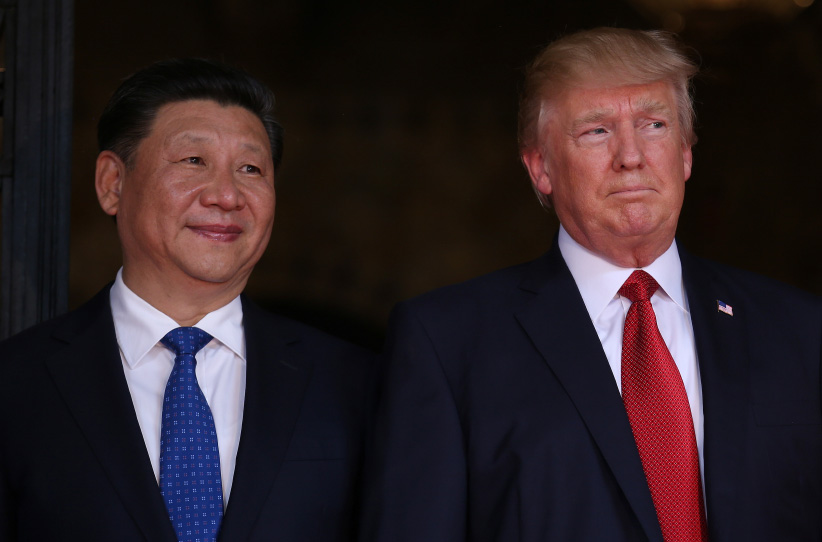As the U.S. retreats on trade, China is quietly picking up the pieces
Canada has committed to diversifying its global trade portfolio. The key question now is how closely to align with China’s growing influence
U.S. President Donald Trump welcomes Chinese President Xi Jinping at Mar-a-Lago state in Palm Beach, Florida, U.S., April 6, 2017. (Carlos Barria/Reuters)
Share

Some momentous economic events are apparent the moment they occur. When the collapse of Lehman Brothers signalled the onset of the 2008-09 financial crisis, it was obvious that something major was afoot. On the other hand, sometimes things unfold gradually, making it harder to determine if they are really game changers. The current U.S. surrender of its leadership in global trade to China may be one of those events.
Since his inauguration, President Trump has withdrawn from the Trans-Pacific Partnership (TPP) negotiations and informed Congress of his desire to re-negotiate the North American Free Trade Agreement (NAFTA). The U.S. has launched or threatened trade actions against Canada with respect to softwood lumber and some dairy products, and continues to threaten to build a wall on its border with Mexico. Following his recent trip to Europe, the President attacked Germany’s trade surplus with the U.S. This steady stream of U.S. anti-trade rhetoric has started to desensitize the world to the genuine shift in global trade relations that President Trump is bringing about.
MORE: Trudeau’s pitch for Brand Canada in a Trumped-up world
Some observers would like to think that this shift is just a temporary aberration and, before too long, the U.S. will be back in the game under a new administration. Under this narrative, the optimal strategy for U.S. trade partners like Canada may be to simply wait things out, play defence and try not to exacerbate a difficult situation.
Such a narrative might be plausible, save for one inconvenient truth: America’s competitor for leadership in global trade (China) is not on the sidelines waiting patiently for the race to resume. While President Trump was confounding his trade partners, the Chinese were hosting the Belt and Road Forum in Beijing. The event, which brought together more than 60 countries, was a showcase for China’s buildout of trade infrastructure on both sea and land, connecting its production centres with markets in Europe and all points in between. With a planned investment of more than US$100 billion, China’s B&R initiative is comparable in ambition to the U.S. Marshall Plan that reshaped Europe after the Second World War. It has the potential to consolidate a trading bloc that will dwarf all others—including the world’s largest and most successful trading bloc, NAFTA, now under threat from President Trump.
What does this imply for Canada’s optimal strategy? Playing defence on NAFTA is still a good idea and a cool-headed “tit for tat” approach to provocation works best when dealing with a multiple decision makers and interests in the U.S. Consolidating the promise of the Comprehensive Economic and Trade Agreement (CETA) with Europe makes good sense to help diversify markets and lessen the risks emanating from the U.S. Finally, getting the most out TPP (without the U.S.) is a worthwhile endeavour and adds further to diversification of markets.
More controversial, however, is whether to aggressively pursue a comprehensive trade deal with China or even to position Canada as an eastern terminus of the B&R Network. Even if the U.S. does decide to rejoin the competition for global trade leadership in four years time, it may be too late. Trade relationships and infrastructure are long-lived, and growth in Asian markets is almost certain to outstrip growth in other regions. More importantly, perhaps, is that the US seems vulnerable to a “tipping equilibrium” where, as more countries join the B&R trading bloc, the more attractive it becomes for others to join. Four years from now, lacking any serious competition from the U.S., the B&R bloc may be unstoppable. Thus, Canada’s interests may be best served by moving as quickly as possible to secure a trade agreement with China and through it access to the B&R countries in its bloc.
The decision by the U.S. to abdicate leadership of the global trading system has important implications for Canada. A new global trade leader is emerging, and positioning our firms to follow that new leader may be one of the most important actions Canadians can make to ensure future prosperity.
Paul Boothe is Managing Director of the Trillium Network for Advanced Manufacturing and a Fellow of the Institute for Competitiveness and Prosperity.
MORE ABOUT INTERNATIONAL TRADE:
- Canada remains on Donald Trump’s nice list—for now
- Trudeau’s pitch for Brand Canada in a Trumped-up world
- Chrystia Freeland hopes to save free trade with Europe
- Canada’s trade deficit narrowed to $2 billion in November: StatsCan
- Help for the Canadian economy? Yes, from Europe.
- Jobs and other myths about trade
- Ed Fast on Canada’s shift toward Asia, FTAs and exports of expertise